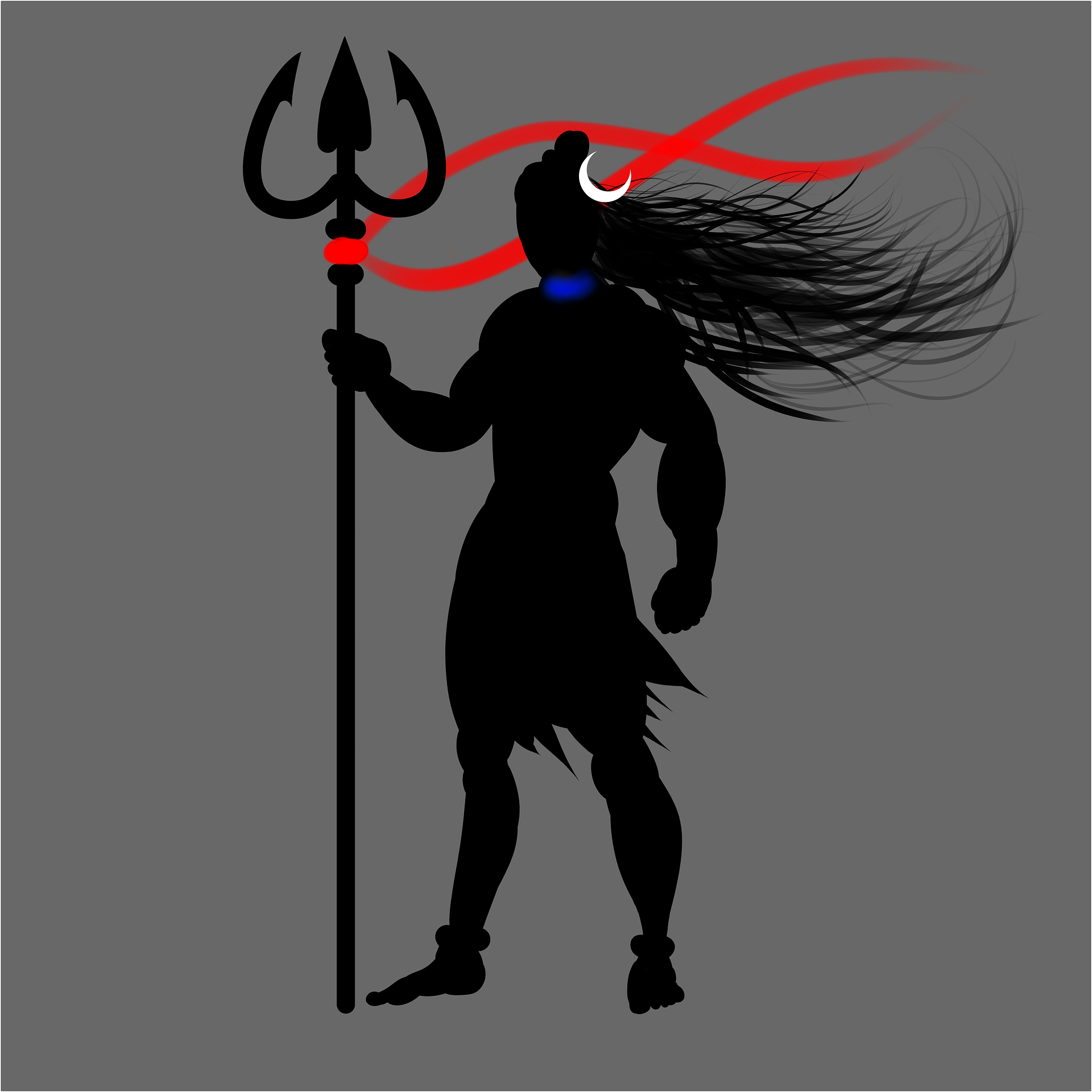
“The culture of a nation resides in the hearts and soul of its people” is a famous saying of our Father of the Nation ‘Mahatma Gandhi‘. India being a diverse country we have different religions and beliefs even we are adapting to new changes like western ideas but by our inner beauty, we come with deep roots of spirituality, devotion, and divine power that are entangled with the earth. In various forms of our Lord, we have the Hindu god Shiva, and the Jyotirlinga is a devotional representation of him. The word is derived from the Sanskrit combination of the words ‘Jyoti‘ which means luster and linga. Shiva Mahapuran mentions 64 original Jyotirlinga temples in India, but 12 of them are the most sacred ones called Maha Jyotirlinga.
There is a very interesting message attached to the origin of this concept. According to Shiv Mahapuran, once there was a dispute between Brahma and Vishnu over the supremacy of creation. To settle the dispute, the Supreme Lord Shiva pierced the three worlds to appear like a huge infinite pillar of light. The Jyotirlinga which later cooled down in the sacred mountain Annanmalai (on which the Ankleshwar temple is situated), Vishnu, and Brahma split their paths downward and upward respectively to try and find the light. Lord Brahma lied that he had found the end while Vishnu accepted his defeat. Lord Brahma angered Lord Shiva, and he cursed Brahma that he would not be worshiped despite being the creator of the universe. The Jyotirlinga is the unbroken reality of the Supreme Shiva from which Shiva appeared in another form as Lingodbhava. These sign temples are where Shiva appeared as a fiery pillar of light.
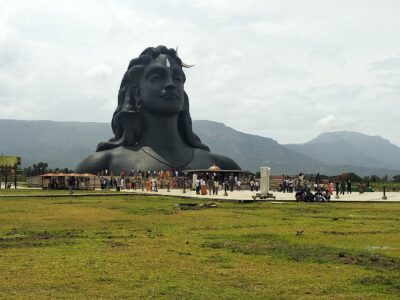
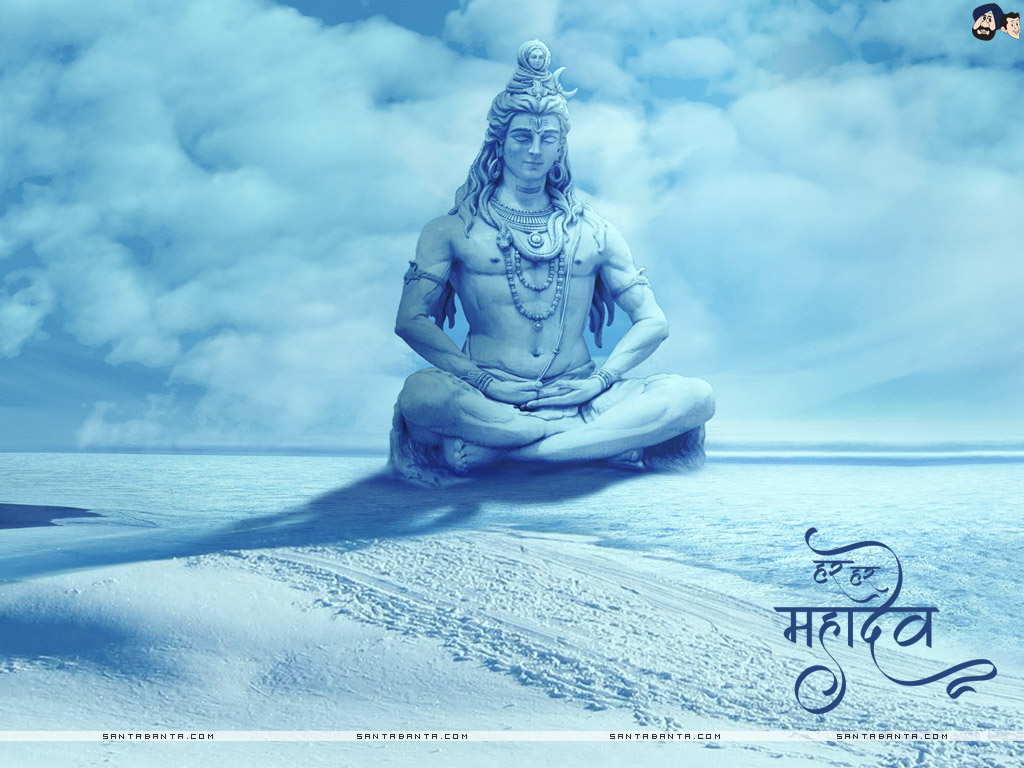
- In Indian mythology, we worship Lord Shiva and his various forms. There were originally believed to be 64 Jyotirlingas, but 12 of them were considered sacred and divine, each named after the presiding deity, each believed to be a form of Shiva. Shiva’s role is to destroy the universe in order to recreate it. Hindus believe in the power of entertainment to perfection, which destroys illusions, hence better worshiped as the primary god and a member of the Shaivite sect.
1. Somnath Temple
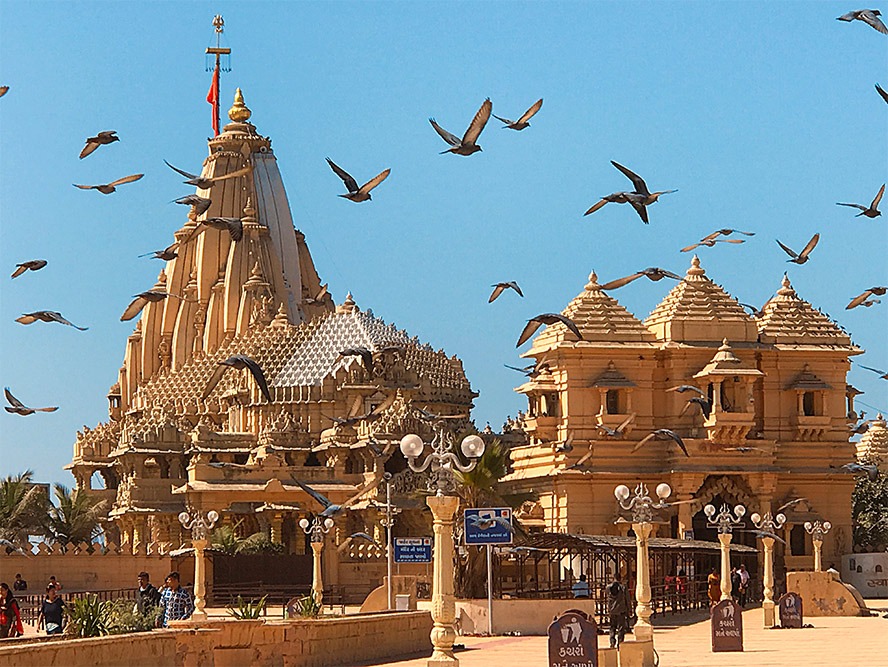
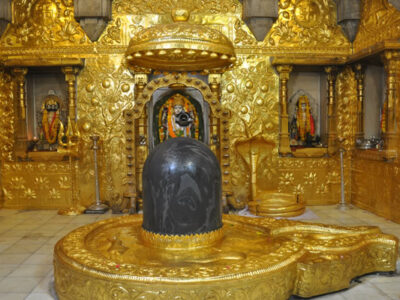
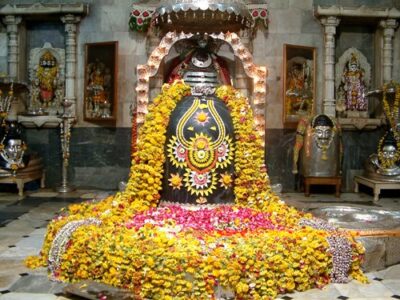
Now let us discuss that the most divine linga mentioned in Shiv Purana is “Somnath Temple Gujarat” which is situated in Prabhas Patan Somnath marvel in Surat region of western on the coast of Arabian Sea. It is one of the most divines of all Jyotirlingas, an important pilgrimage center that is decorated by thousands of devotees every year, especially during Maha Shivaratri. In addition, it has become a famous tourist attraction. With this, the twelfth Jyotirlinga begins. It is known for its mythological tradition and history as it was destroyed and 16 rows were constructed. According to a legend, the moon god, ‘Somadev’ had 27 wives (Daksha Prajapati’s daughters); Among them, he loved only Rohini and neglected all other wives.
Seeing this, Daksha Prajapati cursed the moon god that he would consume his luster in the darkness of the night. Plagued by misery, the Moon God prayed to the Jyotirlinga of Lord Shiva for 4000 years at the place where the Somnath temple is situated today. Pleased with the devotion of Moon, Lord Shiva blessed him to shine for only 15 days in a month. After regaining its luster, the Moon God built this temple in gratitude to Lord Shiva. It is said that Lord Brahma asked the Moon-god to build a temple for Lord Shiva. The temple is believed to have been constructed during the period between 320 and 500 AD. Originally believed to be made of pure gold and silver, the temple saw massive destruction during different time periods by Arab and Afghan invaders and the Mughal emperor, Aurangzeb. These attacks took away all his property from the temple. Even after all these attacks and destructions, the glory of this holy place remained untouched. In 1947, the temple was renovated on the orders of Sardar Vallabhbhai Patel and the Jyotirlinga was established by the then President Dr. Rajendra Prasad.
According to some sources, this temple is about 70 million years old and has stood as a pillar of inspiration for the people of Sanatan Dharma for ages. There are many places in the temple itself. These include the Sri Capaldi Vinayaka and Sri Hanuman temples along with Vallabhghat. The Shivalinga in the temple is believed to be safely hidden within its hollow, the famous Syamantaka gem, the philosopher’s stone, which is associated with Lord Krishna. It is said to have been a magic stone, capable of producing gold. It is also believed that the stone has chemical and radioactive properties and can create a magnetic field around itself which helps it to float above the ground. According to scholars of history, the site of Somnath has been a pilgrimage site since ancient times as it was said to be the confluence of three rivers Kapila, Hiran and the mythical Saraswati. The Sangam was called Triveni Sangam and is believed to be the place where Soma, the moon-god bathed and regained his luster. Legend has it that the initial structure of the temple was first built by the moon god who built the temple out of gold. The Sun God used silver for its construction, while Lord Krishna made it from sandalwood. According to the Prabhaskhand of Skanda Purana, while answering Parvati’s question, Lord Shiva revealed that Somnath has been named 8 times so far.
2. Mallikarjuna Temple
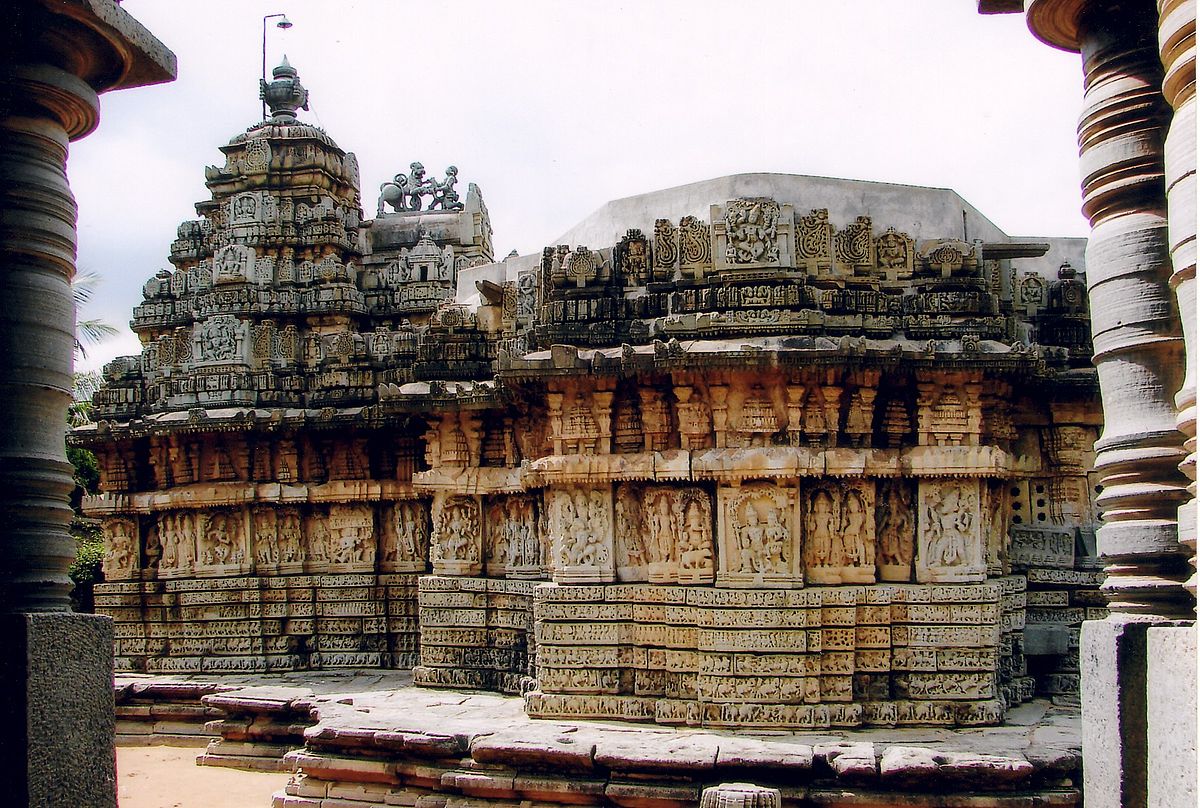
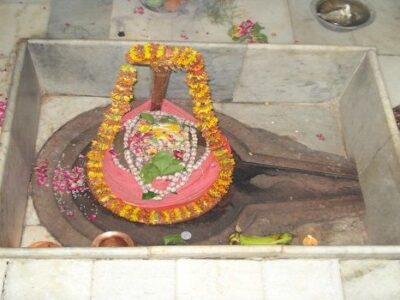
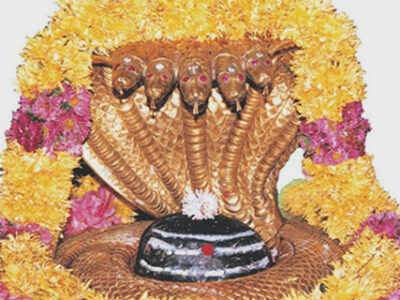
The second Srisalam is the Mallikarjuna temple situated on a hill in Kurnool district in Andhra Pradesh. Lord Shiva is worshiped by Lingam. This religious temple is considered auspicious in terms of reincarnation and believes that the person who does the hairstyle does not get reincarnated, they attain salvation. Built-in about 1234 80 seconds by the Hoysala king Veera Narasimha, its stand in glory captivates the hearts of devotees with its divine essence and exquisite Dravidian style of architecture. It is the only temple where pilgrims can touch the deities not allowed in other Shiva temples. According to the Shiva Purana, Lord Shiva took the form of a Jyotirlinga here on Mount Krauncha, when he accompanied his wife, Goddess Parvati to their son Kartikeya to pacify his anger due to the marriage of his younger brother, Lord Ganesha. Had gone. , In front of him. The temple is all decorated with beautiful wall sculptures and carvings depicting scenes from Ramayana and Mahabharata. The exquisite sculptures of the temple reflect the splendid sculptural skills of the then Hoysala craftsmen.
The Yakshagana performance every evening is one of the most fascinating sights to see in this temple. From the sources, we know that the temple of Lord Shiva was established by Arjuna, one of the Pandavas of Mahabharata. The nearby Kumbaya river adds to the relaxing atmosphere and beauty of this place. The Jatra festival held in the month of March is the most popular attraction of Mallikarjuna Temple, a place where Shakti Peeth and Jyotirlingam are together. Legend has it that Shiva and Parvati came here to meet their angry elder son Kartikeya as their younger brother Ganesha was getting married before them. The huge fort-like temple has Mallikarjuna Swamy and Bharamaramba Devi as its main deities. Adi Shankaracharya composed his Sivananda Lahiri here. The most important festivals celebrated here are Mahashivratri and Navratri. Mallikarjuna Swamy Temple is currently managed and the administration is looked after by the state government. Several rulers contributed to the construction and maintenance of the Mallikarjuna Swamy temple. However, the first records are found in the books of the builders of the Shatavahana Empire in 1 AD. Subsequently, Ikshvaku, Pallavas, Chalukyas and Reddys, who were also followers of Mallikarjuna Swamy, contributed to the temple.
The Vijayanagara Empire and Chhatrapati Shivaji also reformed the temple and the temple (constructed the gopuram in 1667 AD) respectively. The worship here was stopped during the Mughal period but resumed during British rule. However, it was only after independence that this temple came into prominence again. Lord Shiva and his wife Goddess Parvati could not decide which of their son Ganesha or Kartikeya should be married first. To determine who would be first, they set up a contest for both: whoever goes around the world first will be the winner. Lord Kartikeya immediately sat on his mountain peacock. Lord Ganesha, on the other hand, went around his parents claiming that they were the world to him. It is said that going around one’s parents is equivalent to going around the world. So, he beat his brother and won the race. The happy parents got their son married to Siddhi (spiritual power) and Riddhi (prosperity). In some legends, Buddhi (Wisdom) is also believed to be his wife. When Lord Kartikeya heard about this on his return, he was upset and decided that he would remain unmarried. (However, in some Tamil legends it is said that he had two wives.) He left for Mount Krauncha and started living there. His parents went there and so there is a temple for both – a linga for Shiva and a Shakti Peeth for Parvati.
3. Mahakaleshwar Temple
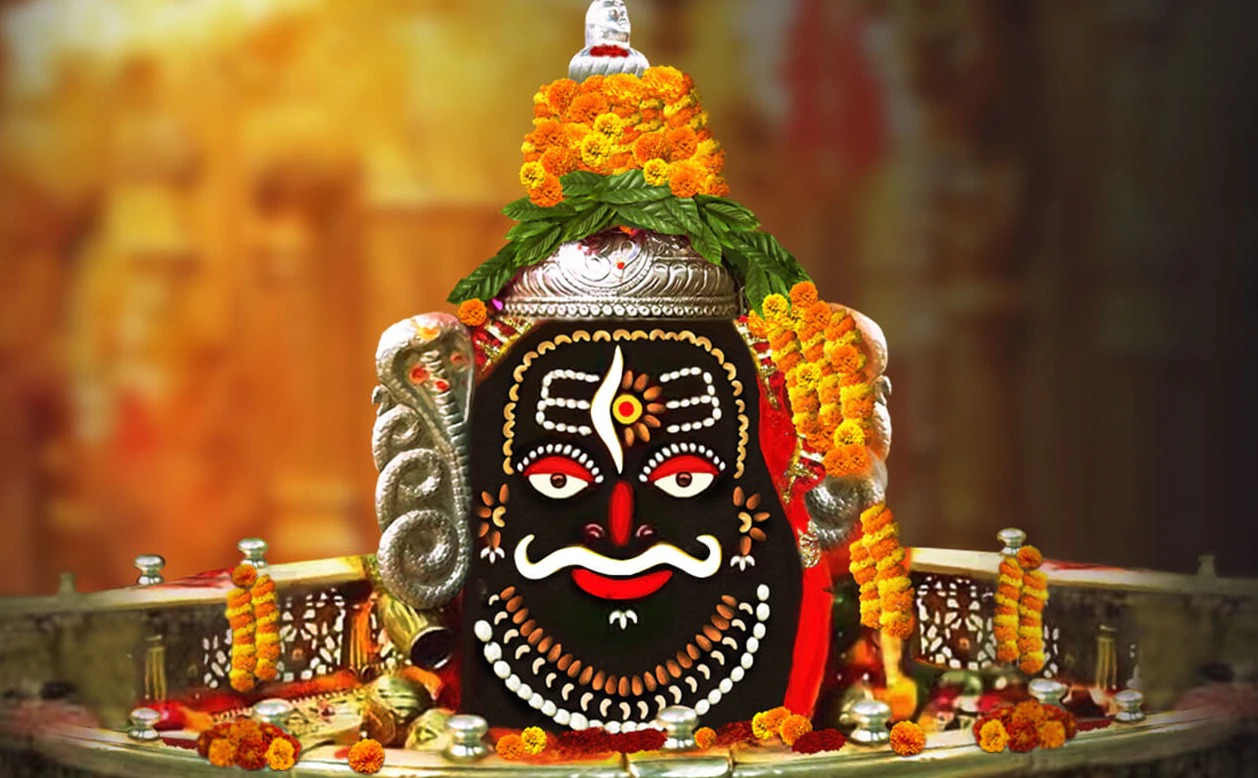
The third among them is the Mahakaleshwar Temple, one of the top “Tantra” temples in India located in the history of the city of Ujjain in Madhya Pradesh on the banks of the river Kshipra. The temple stands on the banks of holy rivers which adds to its beauty. The temple of Lord Shiva here is called Swayambhu which means one who creates his own power. The passive position located here is known as Dakshinamukhi Dakshinamukhi. This feature is only seen here out of 12. There are images of Ganesha Parvati Kartikeya in a different direction inside the temple. The main attraction of this temple is its Bhasma Aarti which is the first ritual performed in the morning, during which the Shiva Linga is bathed with fresh cremation ashes. Thousands of pilgrims come here during the special month of Sawan and Nag Panchami. After the image of Nandi, the vehicle of Shiva, there is an idol of Nagchandreshwar, whose darshan remains open during Nag Panchami. The present structure of this temple was built by the Maharaths, but at present, it is under the associate district of Ujjain. It is believed that King Chandrasen of Ujjain was a great devotee of Lord Shiva. While he was praying, a little boy Shikhar wanted to pray with him. However, he was not allowed to do so and was sent to the outskirts of the city.
There, he overheard a conspiracy by the enemy kings Ripudaman and Singhaditya to attack Ujjain with the help of a demon named Dushanan. He started praying to Lord Shiva to protect the city. Vridhi, a priest heard her prayer and prayed to God to save the city. Meanwhile, rival kings attacked Ujjain. They were almost successful in conquering the city when Lord Shiva came in his Mahakal form and saved him. Various legends have it that Lord Shiva appeared from the ground in Ujjain to destroy a demon named Dushane whose tortures on the people and Brahmins of the city of Ujjain had crossed all limits. Lord Shiva took the form of Jyotirlinga after killing the demon and since then he has been showering his divine blessings in this holy city. It is the only one facing the south temple and has the Sri Rudra Yantra upside down on the roof of the sanctum (where the Shivalinga sits). Even Shakti Peeth and Jyotirlinga are together here. The Mahakaleshwar temple is built in Maratha, Bhumija, and Chalukya architectural styles. It has five levels, one of which is underground. On the second floor above the Mahakaleshwar Linga is the Omkareshwar Linga. Installed on the third floor of the temple is an image of Nagachandreshwara – in which Lord Shiva and Parvati are seated on a ten-headed snake and surrounded by other idols. It has a tall shikhara (Shikhar) with intricate and beautiful carvings.
4. Omkareshwar And Mamleshwar Temple
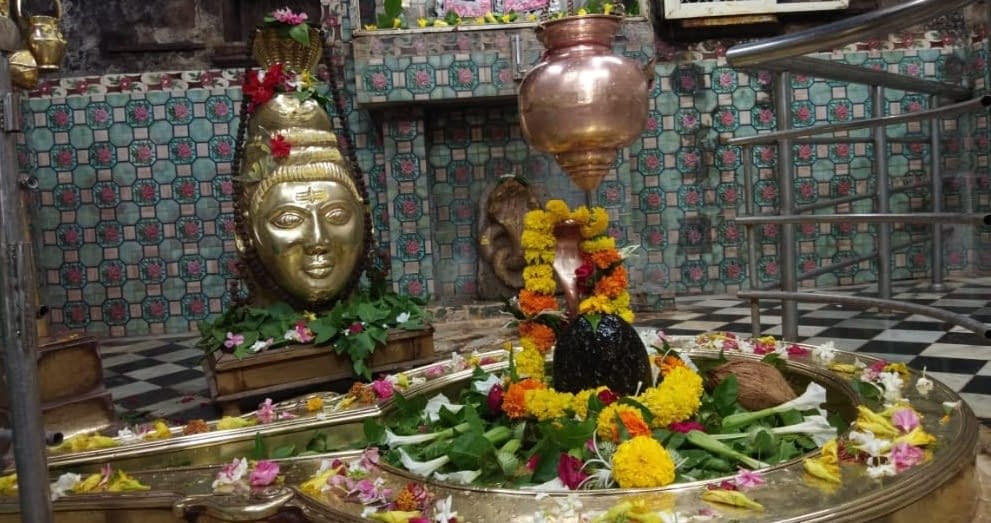
The fourth sacred Jyotirlinga of Lord Shiva resides in the divine ‘Omkareshwar’ and ‘Mamleshwar’ temples at the banks of Narmada River on an island called Mandhata in Madhya Pradesh. It is believed that the island is in the shape of ‘Om‘ – a spiritual symbol in Hindu Mythology. There are two main temples located, one is Omkareshwar which signifies the lord of om sound whereas the other one is Amareshwar which means large lords of immortals. There are two ways to reach on the other side which is, either via a boat ride or the Mamleshwar Setu. Ideally, one should consider taking a boat ride one way and walk the other. A series of steps from the ghats lead to the temple. This temple also has shrines of Goddess Parvati and Five-faced Ganpati. It is said that when Vindya, the deity of controlling Vindhyanchal ranges was worshiping Lord Shiva for sins committed. He created a lingam made of sand and clay. Thousands of devotees gather here for the darshans of Omkareshwar Jyotirlinga on the occasions of Shivratri, Mahashivratri, and Kartik Poornima. Serene Vibes and picturesque views of the sacred Narmada River adds to the divinity of these shrines. The temple of Mamleshwar is separated from Omkareshwar by a narrow ridge. As per Hindu mythology, there are 3 legends behind the Omkareshwar Jyotirlinga.
According to the first legend, ‘Vindhya Parbat‘ performed a penance to please Lord Shiva; As a reward, Lord Shiva appeared here and blessed the Vindhya Parbat with his wish of being greater than ‘Meru Parbat’. The Linga which was worshiped by Vindhya Parbat was split into two parts ‘Omkareshwar’ and ‘Mamleshwar’ at the request of gods and sages. Since then, it is believed Omkareshwar and Mamleshwar temples are the single forms of the same Shiva Lingam. According to a second story, King Mandhata along with his two sons performed penance. Seeing their devotion, Lord Shiva appeared as a Jyotirlinga. As per the third story, Lord Shiva, in the form of Omkareshwar, defeated the Asuras during a violent war between Devas and Asuras. Shiva, pleased with this gesture, appeared in two forms- Omkareshwar and Amareshwar. And because that sculpture was in Om shape, the island was named Omkareshwar. This place is also known as Adishankar’s cave – The place where Adi Shankara met his guru. It has been suggested that there have been signs of habitation in Omkareshwar for 5500 years. Purans also support that it was a living as well as a pilgrimage place for a long time. In the recorded history, from 10-13th CE, Omkareshwar was under the rule of Parmars, followed by Chauhan Rajputs. Despite the fact that Mughals rules almost all over the country, Omkareshwar was still under the administration of Chauhans. Omkareshwar is also believed to be the ‘NabhiSthal’ or the navel of the river and a perfect place to begin and end the Narmada Parikrama. For others, who start from the source, it is still an important stop on the Narmada Parikrama Journey. Made of 60 solid stone pillars, the mandapa of the temple is beautifully made carved with Yakshi figures. A rounded, elliptical-shaped, the Shivalinga is in the form of a rock on which constantly water is offered. Abhishek is done with milk, curd, and Narmada water three times a day. The pedestal is provided with a passage for draining away the water that is poured on the top. Also, behind the Shivalinga is the image of Parvati in silver. Morning Puja is done by the temple trust, day puja is done by Scindias, and evening one by the Holkars. Shayan or the night Arti is quite popular here. This Aarti is open to the public and you can witness this around 8:30 PM every night. A bed is laid out for Shiva and Parvati in front of the Shivalinga. A game of Chaupad is placed for them to play before they go to sleep. This temple is also called Omkar Mandhata temple as it is believed that it was the devotion of the Ikshvaku king Mandhata that brought Shivalinga here. His ‘Gaddi’ can still be seen in the temple premises.
There are many small temples surrounding the main temple like a PanchMukhi Hanuman Temple, a Shani Temple, and a temple dedicated to Dwarkadhish. from the back of the temple towards the hill and you would see a tall white wall – this is the Mandhata palace of Omkareshwar. There are 80 odd steps that you have to take to reach the gate of the palace. A part of it is open to the public. The insides of the temple are made like a typical North Indian Haveli wherein you will see an open corridor surrounded by pillared corridors. What attracts me the most is the simple yet colorful Durbar hall. There is a beautiful round ceiling with remains of glasswork on it. However, the best part of this hall is the view from its Jharokhas or overhanging windows.
The Mamleshwar temple, also known as Amleshwar or Amareshwar temple is one-half of the Jyotirlinga at Omkareshwar. It is cited that one’s Omkareshwar pilgrimage is not complete without visiting this temple Mamleshwar temple is located in a walled complex.
As a complex of 7 different temples by ASI. In terms of temple architecture, the Mamleshwar temple complex has an old-world charm. As you walk around the temple complex you are taken back in time surrounded by mighty stone walls with carved sculptures. A Nandi Mandapa outside the main temple is worth noting. Apart from this, there is a Kashi Vishwanath temple and a Vishnu temple which are frequently visited by visitors.
5. Baidyanath Dham
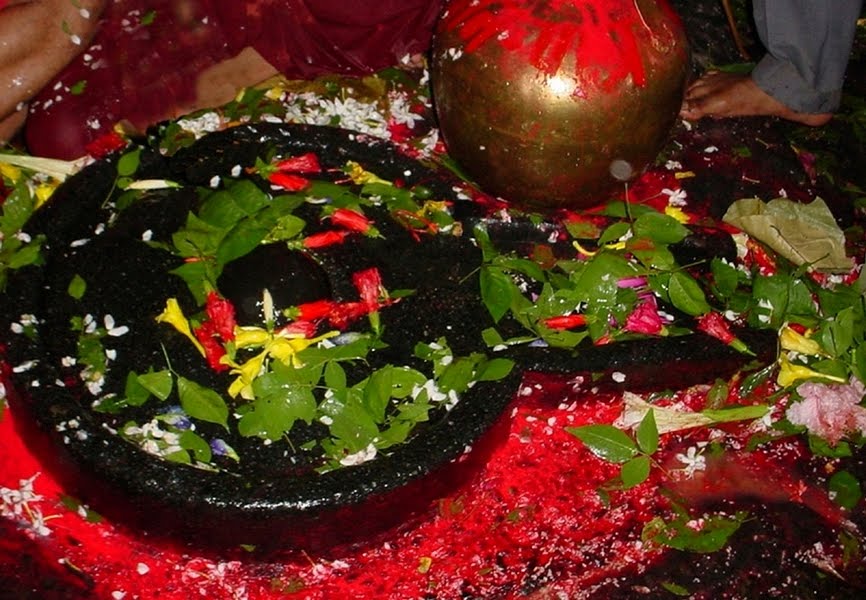
Out of the 12 Shiva Jyotirlingas, Baidyanath Dham in Jharkhand, located in Deoghar of Santhal Pargana division, is adorned with the presence of 21 temples. The sacred Shivling present here is decorated with precious gems. It is not only one of the 12 Jyotirlingas, but also a prominent Shakti Peeth, where the body parts of Goddess Shakti fell. This temple was built under Raja Purana Mak and is known for its Shravani Mela. During the Mughal rule, Raja Man Singh, the ruler of Amer, is said to have constructed a pond here which is known as Mansarovar. The pyramid tower of the temple is 72 feet high. The eight-petalled lotus known as Chandrakanta Mani is the most beautiful to look at. This temple got its name when Shiva, pleased with the gesture of the demon Ravana, cured him of being a physician, since then it is called Baidyanath.
Another interesting activity performed here is the ‘Kanwar Yatra‘, an annual pilgrimage of devotees of Shiva, who are called ‘Kanwariyas‘ or ‘Bholes‘. A popular legend here states that this is the place where Ravana sacrificed his ten heads to seek the blessings of Lord Shiva. The ends were then joined back by Lord Shiva, who acted as a Vaidya (doctor), and thus, the place was named Baidyanath Dham. A popular belief claims that worshiping in this temple brings healthy and prosperous life to the devotees. According to Hindu scriptures, the demon king Ravana worshiped Shiva at the present site of the temple to get a boon that he would later wreak havoc in the world. Lakhs of participants collect holy water from the Ganges and carry it for hundreds of miles to be distributed as prasad at the Baidyanath temple in Jharkhand. The main temple has a pyramidal tower in which three gold vessels are arranged in an organized manner. These were gifted by the Maharaja of Giddhaur, Raja Puran Singh. There are five knives in trident shape (Panchasula) as well as an eight-petalled lotus gem called Chandrakanta Mani. Another version states that Ravana, one of the greatest devotees of Lord Shiva, requested him to make Lanka his home. The Lord could not accept it but he said that the Shiva Linga would be as good as his presence. He put a condition that while carrying the Shivling, Ravana should not put it down anywhere. If he did, the place where he placed it would be the place of the penis. When Ravana was taking it to Lanka, the gods feared the consequences of the linga in Ravana’s kingdom and requested Lord Varuna, the lord of water, to break his journey. Varuna entered Ravana’s stomach, from which the demon king wanted to relieve himself. He got down on the ground and handed over the linga to a brahmin (disguised as Lord Vishnu) and asked to hold it. As Ravana went to redeem himself, Lord Vishnu placed the linga on the ground and disappeared. When Ravana came back, he realized that he had been tricked. The linga was resting on the ground. He tried to displace it with all his might. However, he could not. So he saluted there. This place is considered to be Deoghar. This temple also doubles as a Shakti Peeth. When Lord Shiva’s first wife, Sati, immersed herself after the yajna (sacrifice or offering) of her father Daksha, the sad lord, wandered the world with her body. Lord Vishnu cut it into 52 parts. It is said that his heart fell in Deoghar – making it a Shakti Peeth.
6. Bhimashankar Temple
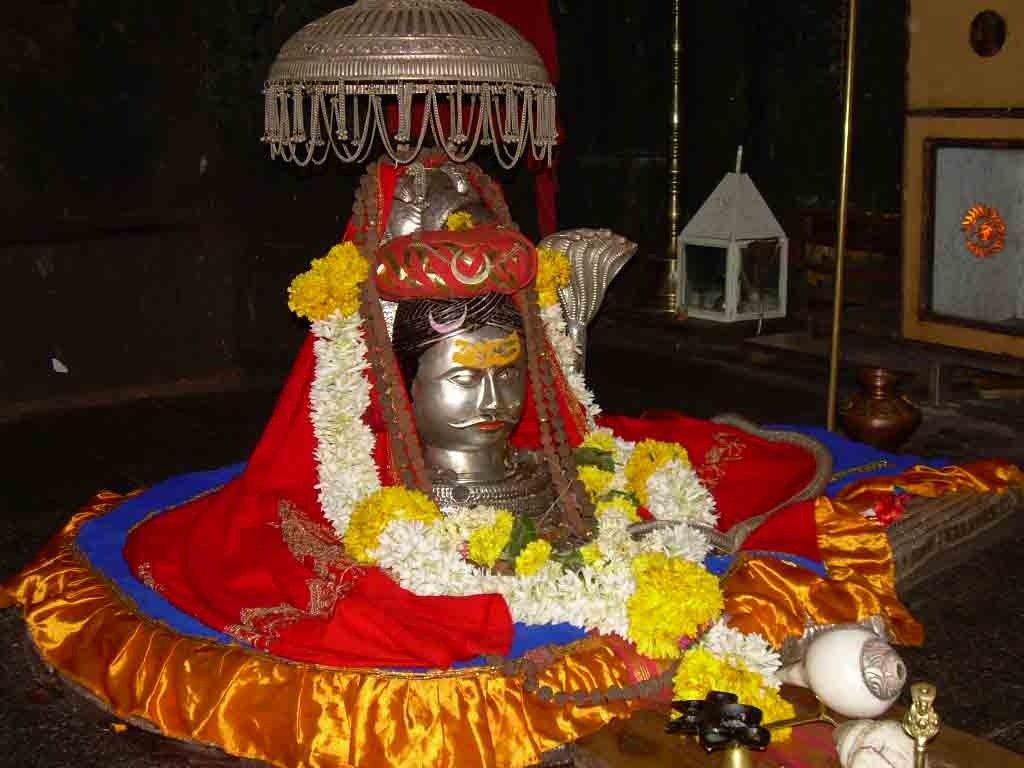
The sixth Jyotirlinga, Bhimashankar temple is a sight of unequaled grandeur. It is situated in a small village called Bhorgiri amidst the Sahyadri hills near Pune in Maharashtra. More precisely it is situated in the Ghat region of the Sahyadri mountain range and is also the source of the Bhima river. The Bhimashankar temple is the best example of this when it is considered to be a part of the Nagara architectural form. The structure was built in the 13th century but the summit was later developed by Nana Fadnavis. The surroundings of the Bhimashankar temple are also beautiful. The temple is called Swayambhu Lingam. The Garba Griha of the temple is a beautiful amalgamation of Rajasthani and Gujarati influences in its Nagara (Indo Aryan architecture) style. The outer walls of the temple depict scenes from Shiva Leela, Krishna Leela, Ramayana, and Mahabharata, visited by thousands of devotees during the festivals of Shivaratri and Maha Shivratri. According to Hindu Puranas, Lord Shiva took the Rudra avatar to kill an evil demon named Tripurasura, who was in a rage of destroying three forms: heaven, hell, and the world below (Paatala). After slaying the demon, the Lord sat down on the Sahyadri mountain to rest. Then sweat started flowing from his body and Bhima turned into a river. At the request of the gods, Lord Shiva stayed on these mountains in the form of Jyotirlinga. Inside the temple, there is also a temple dedicated to Lord Shani called Shaneshwar and an idol of Nandi. ‘Gupta Bhimashankar’, ‘Hanuman Lake’ and ‘Mokshakund Tirtha’ and ‘Kamalja Mata Temple’ are some of the other religious places around Bhimashankar. Khed Taluka is also called Dakini Desh, hence this temple is also called Dakini Mandir. The temple here occupies a grand location and is a trekker’s paradise. It is also the place from where one of the largest tributaries of the Krishna River originates, called the Bhima River. Here you can also see the Buddha-style carvings of Amba-Ambika in the surrounding areas.
7. Kedarnath Temple
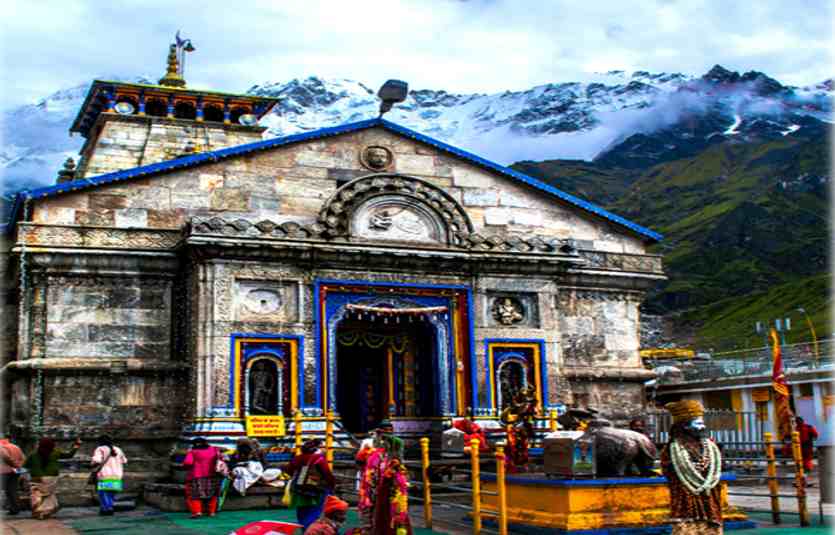
Kedarnath in Uttarakhand is known as the northernmost Jyotirlinga and closest to the eternal abode of Mount Kailash of Lord Shiva. The temple is believed to have originated in the times of Mahabharata. Kedarnath is a part of the Chota Char Dham pilgrimage circuit of Hinduism. Nestled in the snow-capped Himalayas, Kedarnath is an ancient pilgrimage site, rich in mythology and tradition. It can be reached here only six months a year. It is one of the Padal Petra Sthalams of Vada Nadu mentioned in Thevaram. Due to extreme cold on the hills during winters, the temple is closed and the idol of Lord Shiva is brought to ‘Ukhimath’, where the deity is worshiped during the winter months. Worship and worship is done under the supervision of Rawal ji. Rawal ji is the priest of Kedarnath. The time when the temple remains open for public viewing falls from Akshaya Tirtha between the months of April to November, from Kartik Purnima. According to legends, after the war of Mahabharata, Pandavas performed great penance to Lord Shiva here to be freed from their sins. The legend behind this famous place of worship has it that after the Mahabharata war, the Pandavas did penance to wash away their sins – to kill their kin. To be able to do this, he was advised to seek forgiveness from Lord Shiva. He searched high and low and finally, saw Lord Shiva at the place where the Jyotirlinga in Kedarnath is located today. It is said that Lord Shiva was unwilling to forgive the Pandavas for their deceit and sins during the war and hence hid from them. . He disguised himself as a bull and disappeared into the ground. Bhimsen, the other Pandava, tried to pull him out of the ground by dragging his tail and hind legs. However, Lord Shiva himself dug deeper and appeared only in parts in different places – the hump at Kedarnath, the hands at Tungnath, the navel and stomach at Madhyamaheshwar, the face at Rudranath, and the hair and head at Kalpeshwar. Pandavas built temples. At these five places – Panch Kedar – for worship of Shiva. It freed them from their sins. Lord Shiva further promised to stay at the holy place in the form of a triangular Jyotirlinga. This is the reason why Kedarnath is so famous and revered by the devotees. Pleased with the Pandavas, Lord Shiva appeared in the form of a triangular Jyotirlinga. The temple was originally built by the Pandavas and later renovated by the Hindu guru, Adi Shankaracharya. Shiva took the form of a wild boar and dives into the earth at Kedarnath to emerge at Doleshwar in the Kathmandu Valley of Nepal. Pure ghee is applied on the Shivling of Kedarnath when the pig is injured. Kedarnath is situated in the middle of the mountains and traveling by road is not easy. One has to climb uphill from Gaurikund. It is also an important part of the Chota Chardham pilgrimage of India. The temple is built on a rectangular platform with huge stone slabs. There are inscriptions on the stairs in Pali. On the inner walls are figures of various gods and scenes from Hindu mythology. A large statue of Nandi the bull, Mount of Shiva, stands as a guard at the entrance. The Jyotirlinga is in the shape of a conical rock inside the temple – Lord Shiva in his Sadashiva form.
8. Kashi Vishwanath Temple
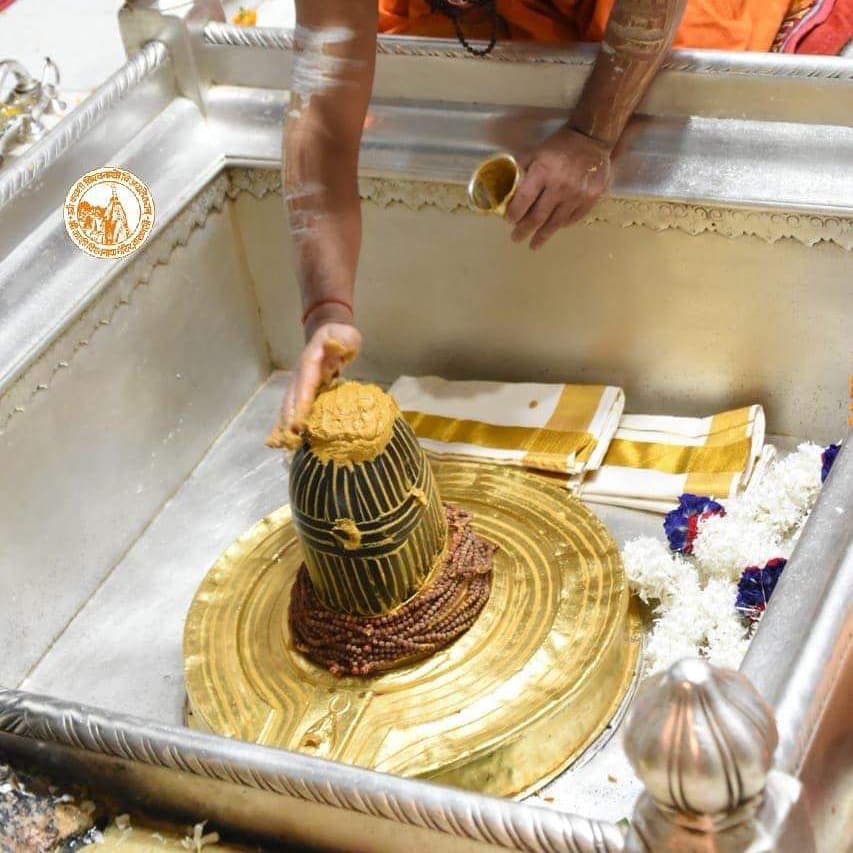
Kashi Vishwanath Temple is one of the twelve Jyotirlingas and the most famous Hindu temple. It is located in Varanasi, Uttar Pradesh. This temple is situated on the banks of the river Ganges. The temple originally dates back to the 11th century and was looted several times by Afghan and Arab invaders. The present temple was renovated by Rani Ahilya Bai Holkar in the year 1780. The Jyotirlinga is in the center of the sanctum sanctorum on a silver altar. There are temples of other deities like Vishnu, Vinayaka, Kalabhairava, and Shaneshwar. There is a well inside the temple, which is called Gyan Kuan or Gyan Vapi. It is believed that the linga was hidden here when the Mughals came to destroy the temple.
Many pilgrims from all over the world gather in Kashi during the festivals of ‘Makar Sankranti‘, ‘Karthik Purnima‘, ‘Shivratri‘, ‘Maha Shivratri‘, ‘Dev Diwali‘ and ‘Annakoot‘. The deity here is Shri Vishwanath. Varanasi is also called Kashi and the name of the deity Vishwanath is fully spelled as Kashi Vishwanath. Vishwanath basically means the ruler of the universe. Kashi Vishwanath has many small temples for Kalabhairava, Dhandapal, Vishnu, Vinayaka, etc. There is also a small street that has many temples called Vishwanath Gali.
According to mythology, Lord Shiva appeared in the form of an endless pillar of fire to stop Lord Vishnu and Lord Brahma from the ongoing battle for supremacy. Seeing the pillar, Vishnu and Brahma departed in different directions to find the end of the pillar. While both did not find the end, Lord Brahma lied to find the end of the pillar. Seeing this Lord Shiva became furious and cursed Brahma that no one would worship him and gave the title of Supreme Being to Lord Vishnu. The pillars of fire disappeared but a small part of it still remains in Kashi in the form of Vishwanath Jyotirlinga. Along with Kashi Vishwanath Temple, many other holy sites including ‘Annapurna Mata Temple‘, ‘Vishalakshi Temple‘ and ‘Kalbhairav Temple‘ are visited by many pilgrims. With a documented history of 3500 years, the temple city is considered to be the oldest surviving city in the world, also known as Kashi.
9. Trimbakeshwar Temple
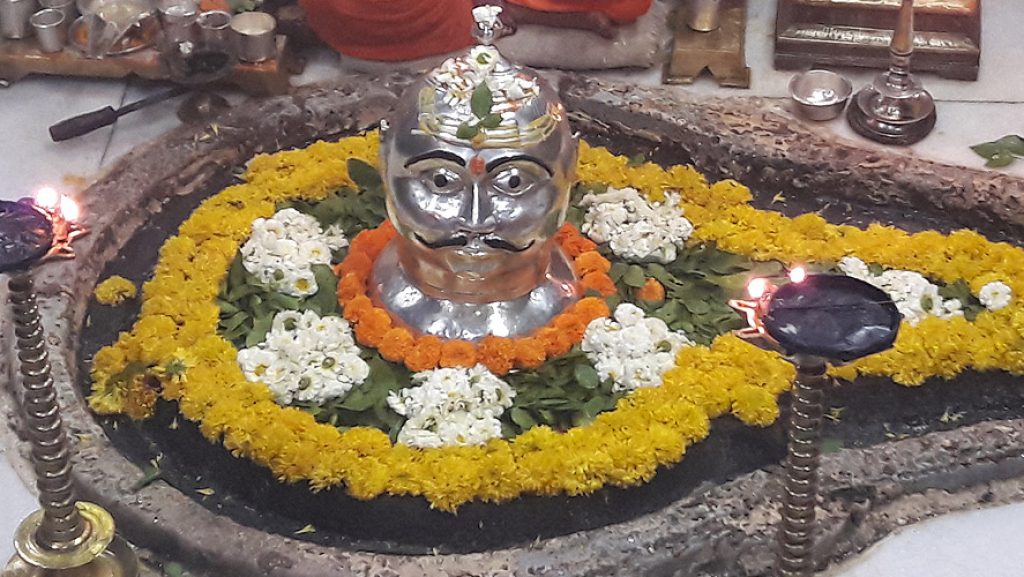
Legacy of the third Peshwa, Balaji Bajirao, the grand Trimbakeshwar Temple attracts devotees from all over the world to embrace the spiritual whirlwind within. It is located in the small town of Trimbak near Nashik in Maharashtra. Trimbakeshwar Temple is located in the Nashik district of Maharashtra. It is an ancient Hindu temple dedicated to Lord Shiva. The holy river Godavari has its source from a pond here at Tryambak. This pond is a sacred tank known as ‘Kusavarta‘ – a pool in the temple area. The architectural style of this temple is Hemadpanthi and it was built by Peshwa Baji Rao. The temple is built amidst hills that represent the three forms of Shiva- Brahma, Vishnu, and Shiva. It is situated in the Brahmagiri, Nilgiri, and Kalagiri hills.
According to the legends, once the sage Gautam had unknowingly killed a cow in his ashram. To purify his sins, he worshiped Lord Shiva and asked him to send the Ganges River to purify him. The river Ganges used to flow by the name of the Godavari river. Seeing this, all the deities sang in praise of Lord Shiva and requested him to reside here in the form of Trimbakeshwar Jyotirlinga. Another legend says that Lord Shiva resides here in the form of three lingams of Brahma, Vishnu, and Mahesh and hence the name ‘Trimbakeshwar’. ‘. With the darshan of the Jyotirlinga, pilgrims take a holy dip in ‘Kushavart’, the holy place from where the Godavari river originates. The most fascinating sight is the three-faced Shiva Linga which is the symbol of Lord Shiva, Lord Vishnu, and Lord Brahma. The linga is decorated with many precious stones like diamonds and emeralds etc. Apart from the main temple of Trimbakeshwar, Lord Krishna, Goddess Gangadevi, Lord Jaleshwar, Lakshmi Narayan, Lord Kedarnath, Lord Rama, Lord Parashurama, Lord Rameshwaram, and Lord Gautameshwar are adorned. Temple. The entire temple is made of black stone. The main feature of the Trimbakeshwar Shiva temple is that the Jyotirlinga has three faces representing the deities – Shiva, Vishnu, and Brahma. All these are present in the hollow space inside the Shivling.
Hence the name Trimbakeshwar (Three Gods). They are covered with a gemstone crown which is believed to date back to the era of the Pandavas. There is a well-named Amritvarshini in the temple. It also has a Kushavarta or sacred pond, which is believed to be the source of the Godavari. It is said that Rishi Gautam lived with his wife Ahilya on the Brahmagiri hills. While there was famine everywhere on the land, food grains were in abundance inside the sage’s hermitage. This was because the gods blessed him because of his steadfast devotion and regular prayers. The other sages felt jealous of him and sent a cow to their fields. When Gautam tried to scare the cow away from her fields, she died. For the sin of killing a cow, Gautama worshiped Lord Shiva to release the river Ganges and let him go to his ashram to be purified. Pleased with her devotion, Lord Shiva freed Ganga and asked her to stay there. The Kushavarta or the sacred pond that exists now is the source of the Godavari. (People worship the Godavari as Ganga.) The sage also requested Lord Shiva to make this place his abode, which the Lord did in the form of Jyotirlinga.
10. Nageshwar Jyotirlinga
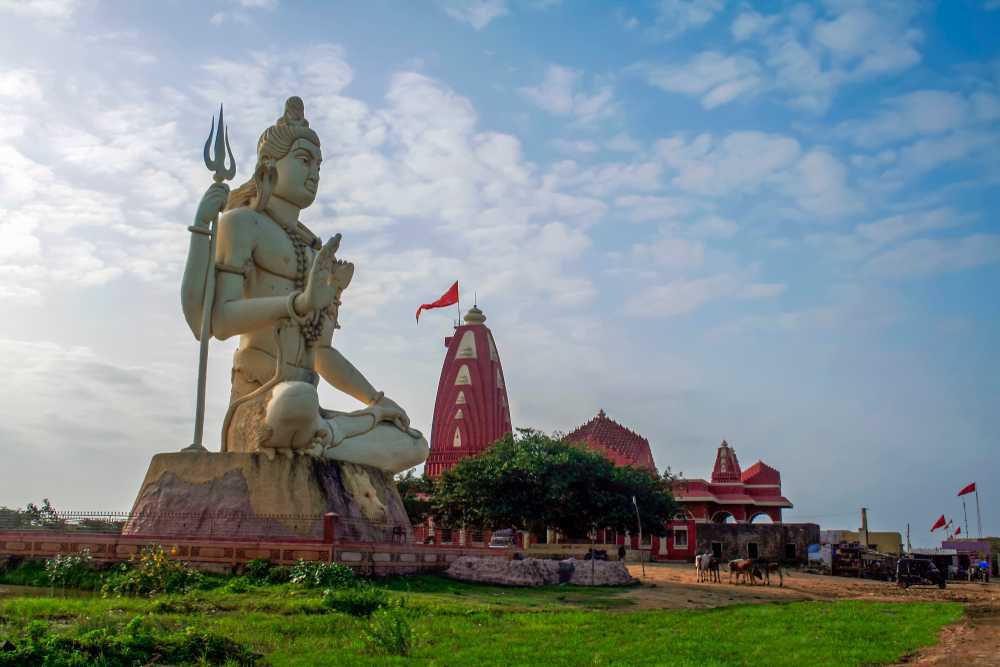
Nageshwar Jyotirlinga is one of the 12 Jyotirlingas mentioned in Shiva Purana and Dwadash Jyotirlinga Stotram, one Jyotirlinga said to be located in Nagesh Daruka-Vana and probably Nageshwar Jyotirlinga is actually in the present Dwarka area of Shiva Purana. It is situated in ‘Darukvan’. Darukavana is an ancient forest named after a demon- Daruki, the demon’s wife- Daruka. Daruki was a devotee of Parvati while Daruka had a fight with Lord Shiva because he had taken Shiva’s devotee Supriya as a prisoner. According to Shiva Purana, a demon named Daruka was blessed by Goddess Parvati, who was the wife of Lord Shiva. Misusing his blessings, Daruka tortured the local people and imprisoned a Shiva devotee named Supriya along with a few others. On Supriya’s advice, everyone started chanting Shiva Mantra to save themselves from Daruka. Seeing this, Daruka was furious and ran to kill Supriya, when suddenly Lord Shiva in the form of Jyotirlinga appeared to protect her and other devotees.
Since then the Jyotirlinga is worshiped in the Nageshwar temple here. The place where the demon was killed is called Darukavanam. It is said that the Lord placed a Shiva Linga (called Naganath) there to establish his abode there. The construction date of the temple is unknown, but the present temple was renovated in 1996 by Late Gulshan Kumar. Thousands of pilgrims visit the temple. Every year to seek blessings from Lord Shiva who is worshiped here as ‘Nagdev’. The 25 m tall statue of Lord Shiva in a seated position is a major attraction of this temple and provides a perfect backdrop for a cherished photograph. Other claims of Nagesh Jyotirlinga’s status come from Aundha Nagnath (Hingoli district of Maharashtra) and Jageshwar (Almora district of Uttarakhand). The temple has a huge statue (25 m) of Lord Shiva in a sitting position, a large garden, and a pond. The linga is made of Dwarka rock and has small chakras on it. It is in the shape of Trimukhi Rudraksha (sacred rosary representing Lord Shiva) and faces south, while the temple faces east.
11. Rameswaram Temple
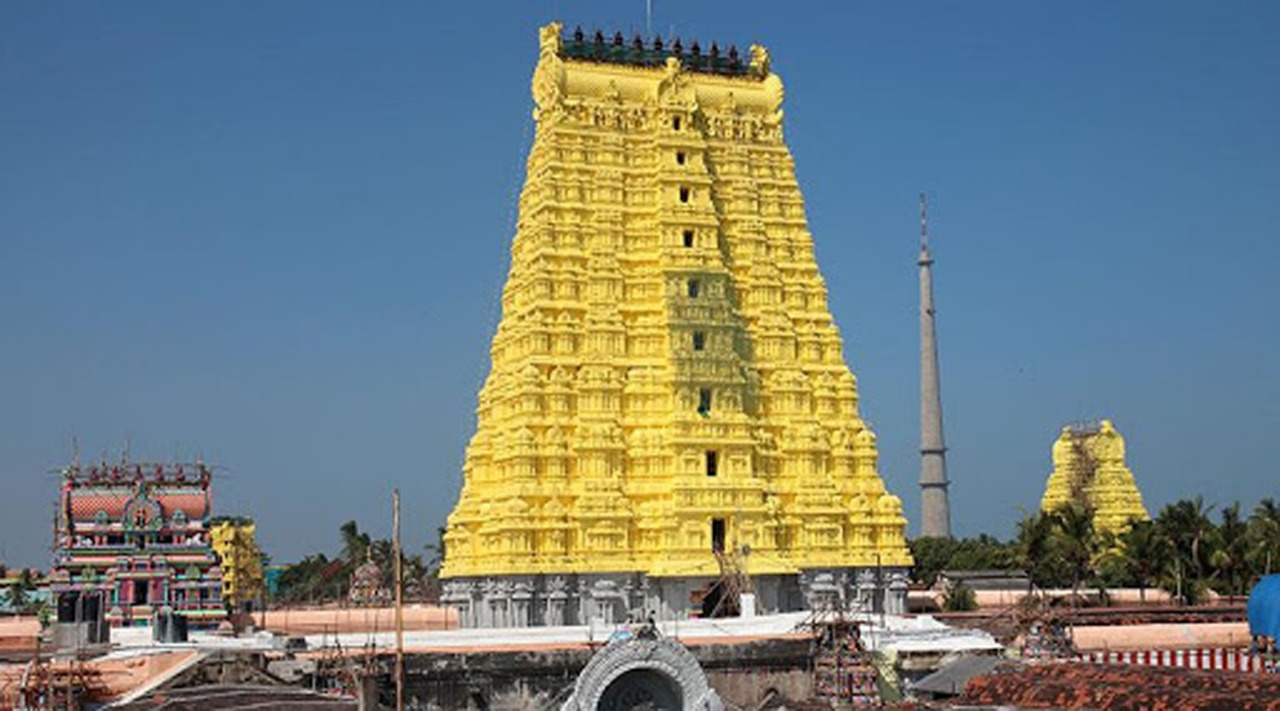
Rameswaram in Tamil Nadu is home to the vast Ramalingeswarar Jyotirlinga temple and is revered as the southernmost of the twelve Jyotirlinga shrines of India. It enshrines the Rameśvara (“Lord of Rama”) pillar. It is also one of the Padal petra stalam of Pandya Naadu mentioned in Thevaaram. the structure of this temple is according to Dravidian architecture. The temple was constructed by Pandya Dynasty. Whereas it was renovated by Jeyaveera Cinkaiariyan and his successor of the Jaffna kingdom. The ‘Ramanathaswamy Temple’ here is home to one of the twelve sacred Jyotirlingas. The temple is a marvelous piece of fine architecture. Majestic towers, sculpted pillars, lavish corridors will absolutely blow your heart away. Ramanathaswamy Temple is the pillar of Lord Rama’s never-ending faith for Lord Shiva. Testimony to the fact is the name Ramanathaswamy which means Master of Rama. It is said that Rameshwaram was sanctified by Lord Rama by worshipping Lord Shiva after returning from Lanka, who killed the demon Ravana for abducting his wife Goddess Sita. To atone for his sins, he wanted to pray to Lord Shiva in the form of Shivling. So, he sent Lord Hanuman to get the biggest lingam from the Himalayas. As Lord Hanuman took very long to get the Shivling, Goddess Sita created a Shivalinga from the sand.
This temple is considered a holy pilgrimage center for Shaivites, Vaishnavites, and Smarthas. Amongst all the temples in India, Ramanathaswamy has the longest corridor. This temple is also included in the Char Dham pilgrimage along with Badrinath, Jagannath, and Dwarkadheesh. Before entering the inner sanctum residing the Shivling, it is mandatory for all devotees to take bath in the 22 ‘theerthams’ or the holy water tanks in the temple complex. Around the temple, there are many more sacred sites that include the ‘Agniteertham’, ‘Gandhamadhana Parvatham Temple’, ‘Panchmukhi Hanuman Temple’, ‘Rama Setu’, ‘Jada Tirtham Temple’ and ‘Kothandaramaswamy Temple’The temple is spread over 15 acres and has tall pyramidal towers (gopurams) and a huge Nandi. There are 4,000 carved granite pillars over a 4,000 feet corridor – said to be the longest in the world. Since the rock is not indigenous to the island, it makes the structure even more marvelous. There are two lingas inside the sanctum – one built by Rama with sand (the main deity) and the other Shiva Linga brought from Mount Kailash by Hanuman – Vishwalinga. There are 64 water bodies or tīrthas around the island of Rameshwaram, out of which 24 are considered sacred and bathing in them is believed to purge you of your sins. The main tīrtha is the Bay of Bengal called Agni Tīrtham.
12. Ghrishneshwar Temple
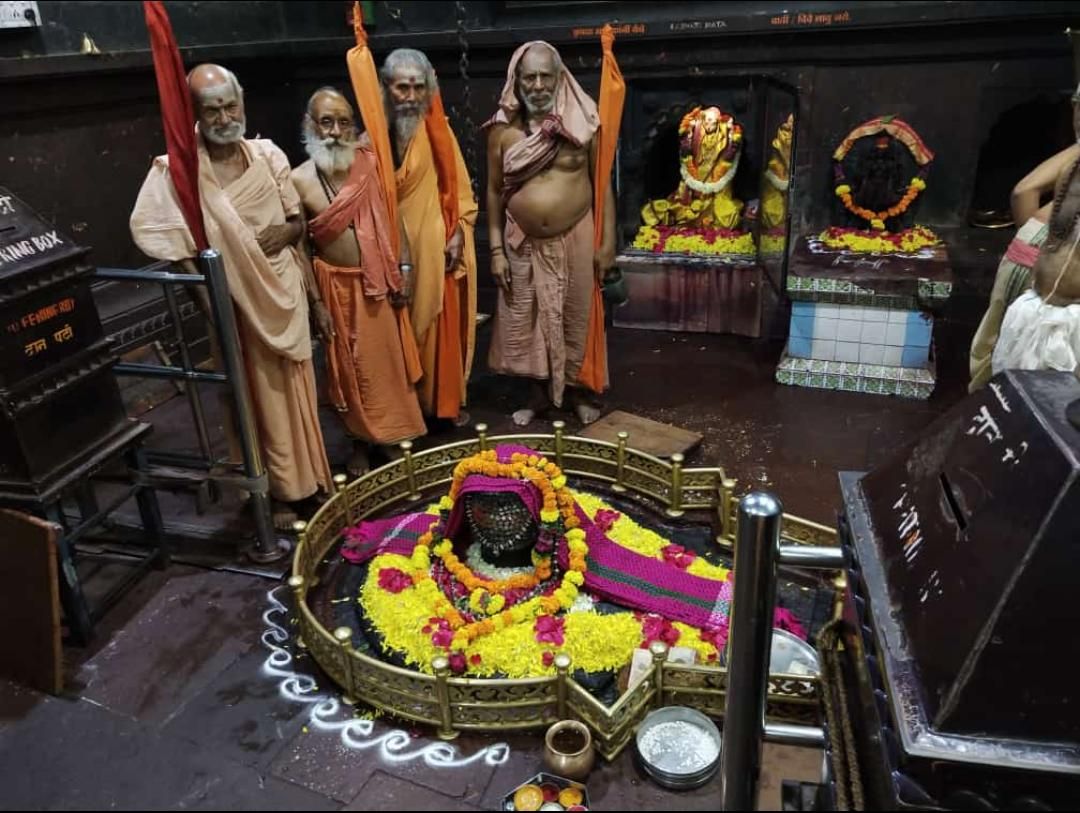
Ghrishneshwar Temple referred to as the Ghushmeshwar temple in Shiva Purana, is one of the 12 Jyotirlinga shrines mentioned in the Shiva Purana. Grishneshwar Temple is in the Aurangabad district of Maharashtra state. It is dedicated to lord shiva. The name ‘Grishneshwar’ means ‘Lord of Compassion’. This temple is an important pilgrimage center for Shaiva’s of Hindus. It was reconstructed by Maratha Queen Ahilya bai Holkar in the 18th century. The temple is built in Hemadpanthi architectural style and matches with South Indian architectural style too. The architecture, paintings, and sculptures on temple walls remind the excellent architectural skills of the artisans of the bygone era. Made up of a five-tier ‘shikara’ it is the smallest Jyotirlinga temple in India. we see the Dashavatars (ten avatars) of Lord Vishnu carved in red stone. There is a court hall built on 24 pillars on which you will find carvings of various legends and mythologies of Lord Shiva. The sanctum houses the east-facing linga. One legend says that there was once a woman named Kusuma, who would worship Lord Shiva every day, immersing the Shiva Linga in a tank along with her prayers. Her husband’s first wife was jealous of her devotion and murdered her son. Although Kusuma was grief-stricken, she kept up her faith and her devotion to the Lord. It is said that Lord Shiva was so pleased with her devotion that he brought her son back to life. Kusuma requested the Lord to stay on, which is why Lord Shiva manifested himself as a jyotirlinga here.
Another legend has it that there was a Brahmin called Brahmavetta Sudharm, who lived with his wife Sudeha in the Devagiri mountains. The couple was childless, so Sudeha got her sister Ghushma married to her husband. On her sister’s advice, Ghushma would make lingas, worship them, and immerse them in the lake nearby. She was, finally, blessed with a baby boy. Over time, Sudeha became jealous of her sister and murdered her son, and threw him into the very lake where her sister would immerse the lingas. Though Ghushma’s daughter-in-law told her that Sudeha had a hand in the murder of her son, Ghushma continued her daily rituals believing totally in the Lord’s mercy. And true to her beliefs, as she went to immerse the linga, she saw her son walking towards her. Lord Shiva appeared before her and told her of her sister’s heinous deed. Ghushma requested the Lord to forgive her sister. Pleased, the Lord granted her a boon. She asked him to stay on in that place, which is why he manifested himself as a jyotirlinga called Ghushmeshwar. The lake in which Ghushma immersed the lingas were called Shivalaya.
13. Shri Vaijnath Temple
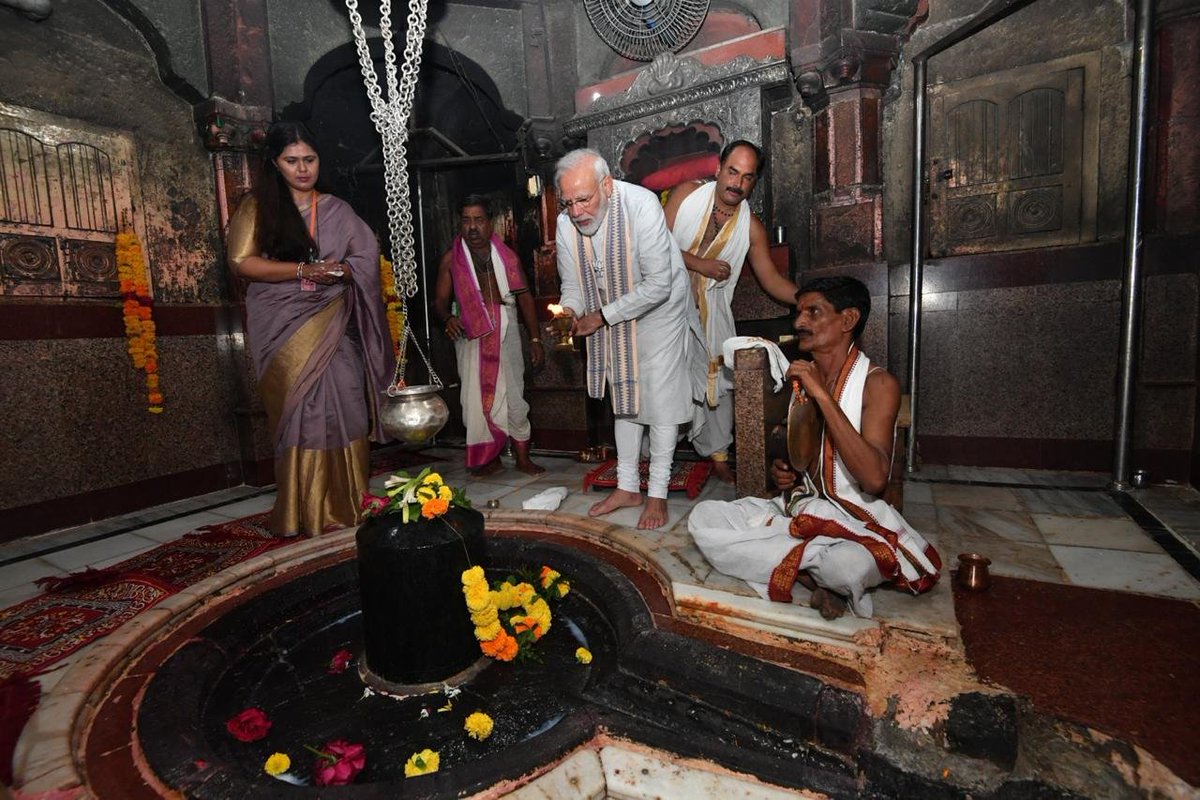
Shri Vaijnath Temple is an ancient Shiva temple located at Parli Vaijnath in the Beed district of Maharashtra state in India. The temple is claimed to be one of the Jyotirlingas but there has not been any notable evidence supporting the claim. It is built out of stone on a small hill and is surrounded by a wall that protects it from all sides. In addition to the place of pilgrimage for Shiva devotees, it is also a meeting point for Harihara, which is a fused Sattvika characterization of Vishnu (Hari) and Shiva (Hara). Lord Krishna’s festivals too are celebrated along with Lord Shankara’s festivals, with great festivity. Festivals of both Krishna and Shiva are celebrated here, as per the Indian Lunar Calendar Since Yama, the master of the southern direction is a subordinate of Shankar, south becomes the direction of Shankar. The Jyotirlingas are south-oriented, meaning, the opening of their Shalunkas faces southwards. Most temples do not face the southern direction. When the opening of the Shalunka faces the south, its pinda possesses more spiritual energy; while the pinda with the opening of the Shalunka facaing north possesses lesser energy.
We should select an appropriate Jyotirlinga and perform Abhishek on that Jyotirlinga, for example, Mahankal is charged with Tama’s predominant energy, Naganatha is in Harihar form, and is Sattva-Tama-predominant and Tryambakeshwar is three components-oriented (also known as Avadhut). After taking samadhi, the work of Saints is more at a subtle level. Their bodies emit a greater quantum of waves of Chaitanya and Sattvikta. Just as the samadhi of a Saint is under the surface of the earth, so also are the Jyotirlingas and Swayambhu Shivalingas. Since these Shivalingas have a greater amount of nirguṇtattva when compared with the other Shivalingas, they constantly emit a greater quantum of nirguṇ Chaitanya and Sattvikta. This helps in continuously purifying the atmosphere on the earth. Also, since these waves are constantly emitted towards the region of Hell, they are in continuous combat with the negative energies there. Hence, the earth is constantly protected from the attacks of powerful negative energies from the region of Hell. Therefore in India, we have the deep spiritual significance of the divine powers and their form. Different goodness is worshipped with true devotion and sacred connections exist between supreme power and devotees. In today’s eras, the new upcoming generation is not aware of such myths and devotion we wish that our Indian tradition never fades with time, perhaps continues till decades.
Top 13 Facts About Jyotirlingas
MallikaArjunaSwamy, Andhra Pradesh– is at the exact location where Shiva and Parvati visited their son Kartik, living there out of embarrassment that he failed his parent’s test.
Bheemshankar, Pune – It was declared as a wildlife sanctuary in 1985. The state animal of Maharashtra, the Malabar Giant Squirrel, is a rare animal found here
Nageshwar, Dwarka – Some archaeological excavations claim five earlier cities at the exact site. It is believed that Adi Shankaracharya laid the foundations of his Western Math at Kalika Peetha here.
Rameshwar, Tamil Nadu– Famous for its architecture, it is exactly the place where Lord Rama worshiped Lord Shiva after he defeated Ravana
Kashi Vishwanath, Varanasi – Believers say this city can never be destroyed. It is a place where Brahma, Vishnu, and Mahesh live here at the same time. Anyone can attain Moksha here. There is no sin on earth that cannot be washed here
Somnath Temple is also a specimen of fine architecture. Dubbed as Eternal Shrine, it is believed to be the place where Lord Krishna ended his Lila and thereafter for heavenly abode.
The Somnath temple is said to be situated at such a place that there is no land in a straight line between Somnath seashore till Antarctica. In an inscription in Sanskrit, found on the Arrow-Pillar called Baan-Stambh erected on the sea-protection wall at the Somnath Temple is stated that the temple stands at a point on the Indian piece of land, which happens to be the first point on land in the north to the south-pole on that particular longitude.
According to legends, in Satyuga when Mandhata of the Ikshvaku dynasty, an ancestor of Sri Ram, ruled the island of Omkareshwar, the Narmada shone brightly. Taken aback by the view, sage Narada asked Shiva, ‘what is it?!’ to which Shiva passed on the knowledge of the ever-changing appearance of the island in each Yuga. In Satyuga, the island took the shape of a giant sparkling gem, in Treta Yuga it was a mountain of gold, in Dwaparyuga it was of copper and in Kaliyuga it has taken the shape of a rock.
In Malikarjuna temple it is believed that Goddess Parvati fought the demon Mahishasura by transforming herself into a bee. Devotees believe they can still hear a bee buzzing through a hole in the Bhramaramba temple!
In the 2013 floods, while adjacent areas were severely damaged, the Kedarnath temple itself was not affected. Kedarnath is the first of the Panch Kedars. In Kashi temple, the spire or shikhara was plated with gold donated by Maharaja Ranjit Singh (who ruled the North-west of the Indian subcontinent) in 1835. Since its three domes are gold-plated, tourists call it the ‘Golden Temple of Varanasi’. Kashi is one of the oldest cities in the world. It is believed that if you see the golden spire and then make a wish, it comes true!
An interesting story behind why the linga faces south in the Nageshwar temple is that a devotee called Naamdev was asked by other devotees to step aside and not hide the Lord while chanting his name. Naamdev asked the others to suggest a direction where the Lord does not exist. The angry devotees carried him to the south and left him there. They were astonished to find that the linga was also facing south!
The Pamban Bridge is a railway bridge on the Palk Strait which connects the town of Rameshwaram on Pamban Island to mainland India. According to the Ramayana, the bridge between mainland India and Sri Lanka is said to be the Ram Setu Bridge that Rama built to reach Sri Lanka to rescue Sita from the clutches of Ravana. Subsequently, Ravana’s brother, Vibheeshana, the new king of Sri Lanka had asked Rama to destroy the bridge. He did this with just one end of his bow and hence the southernmost tip of the mainland in Pamban Island is called Dhanushkodi.
Grishneswar is the smallest jyotirlinga temple in India. The UNESCO World Heritage site, Ellora caves, is less than a kilometer away.
अकाल मृत्यु वो मरे जो काम करे चंडाल का,
काल भी उसका क्या करे जो भक्त हो महाकाल का …!





